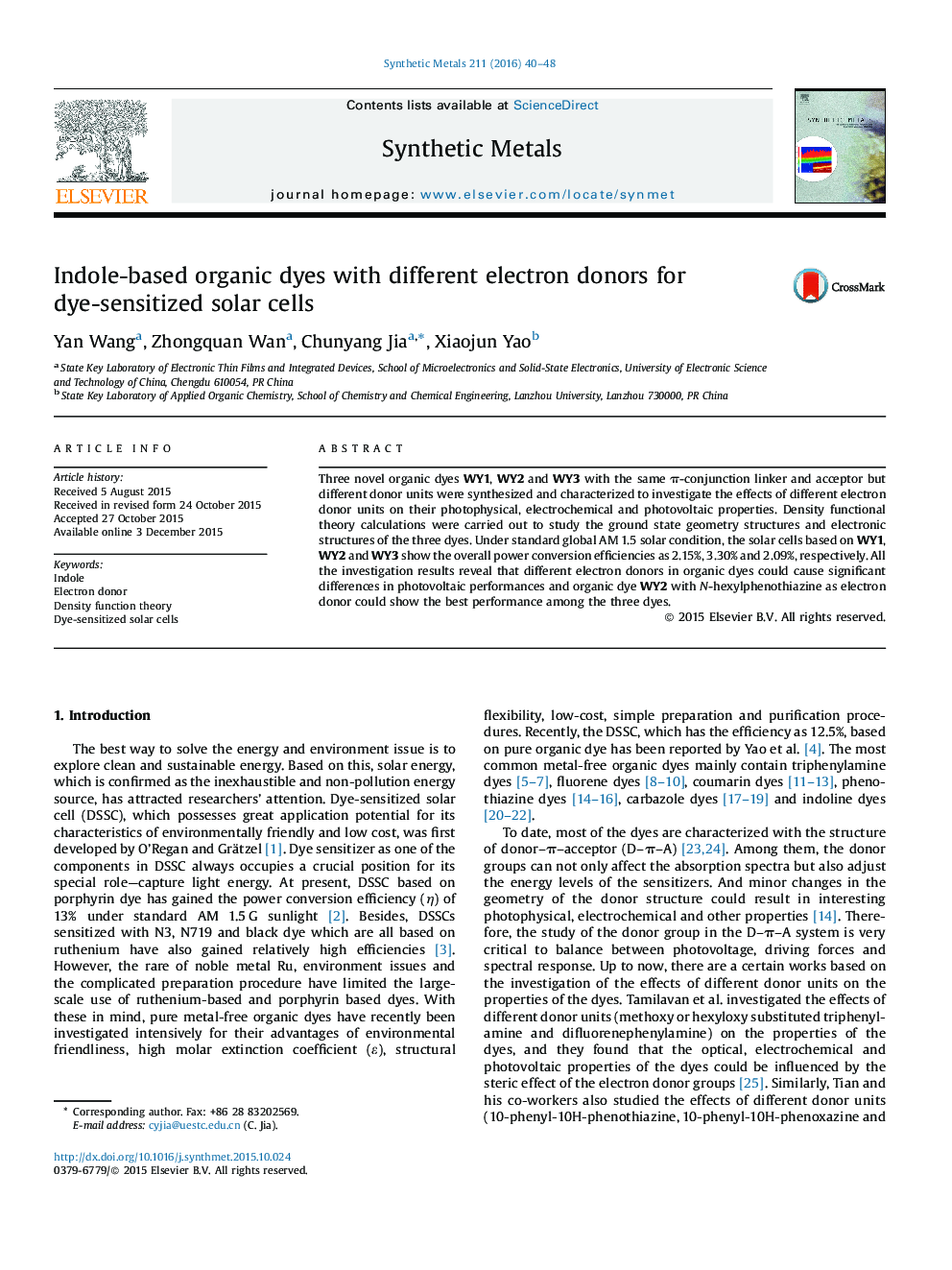| کد مقاله | کد نشریه | سال انتشار | مقاله انگلیسی | نسخه تمام متن |
|---|---|---|---|---|
| 1440355 | 1509366 | 2016 | 9 صفحه PDF | دانلود رایگان |
• Three novel indole-based organic dyes are synthesized and characterized.
• The dyes are studied by DFT calculations.
• WY2 with PTZ as electron donor shows the best performance.
• The DSSC based on WY2 obtains the conversion efficiency of 3.30%.
Three novel organic dyes WY1, WY2 and WY3 with the same π-conjunction linker and acceptor but different donor units were synthesized and characterized to investigate the effects of different electron donor units on their photophysical, electrochemical and photovoltaic properties. Density functional theory calculations were carried out to study the ground state geometry structures and electronic structures of the three dyes. Under standard global AM 1.5 solar condition, the solar cells based on WY1, WY2 and WY3 show the overall power conversion efficiencies as 2.15%, 3.30% and 2.09%, respectively. All the investigation results reveal that different electron donors in organic dyes could cause significant differences in photovoltaic performances and organic dye WY2 with N-hexylphenothiazine as electron donor could show the best performance among the three dyes.
Figure optionsDownload as PowerPoint slide
Journal: Synthetic Metals - Volume 211, January 2016, Pages 40–48
